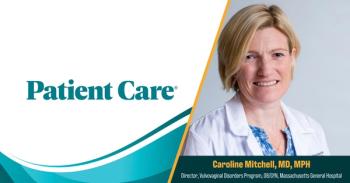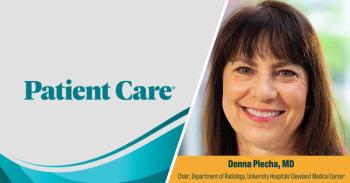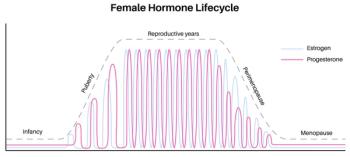
Suboptimal Risk Factor Levels are Nearly Universal at Onset of CVD, Study of 10 Million Reveals
The binational cohort study of exposure to 4 traditional CVD risk factors over time revealed that 99% of CVD events were preceded by suboptimal levels of at least one.
Nearly all individuals who develop cardiovascular disease (CVD), including coronary heart disease (CHD), heart failure (HF), and stroke, have had at least 1 poorly controlled traditional risk factor before a first event, according to an expansive new binational cohort study published in the Journal of the American College of Cardiology (JACC).1
Led by researchers at Northwestern University and Yonsie University in South Korea, the study analyzed longitudinal data from more than 9.3 million adults in the Korean National Health Insurance Service (KNHIS) and 6,803 participants in the Multi-Ethnic Study of Atherosclerosis (MESA), with follow-up periods of nearly 13 and 18 years, respectively. Hypertension emerged as the most common contributor to CVD, affecting more than 93% of the cohorts.1
Evidence has accumulated suggesting that CHD events frequently occur in the absence of well-recognized CVD risk factors, "despite a well-established evidence base on the importance of antecedent traditional risk factors," 2,3 senior author Philip Greenland, MD, Harry W Dingman professor of cardiology at Northwestern University Feinberg School of Medicine, and colleagues wrote. Their findings challenge those claims as well as demonstrate "that other CVD events, including HF or stroke, rarely occur in the absence of nonoptimal traditional risk factors, highlighting the importance of primordial prevention efforts."1
The study cohorts provided repeated assessments of blood pressure, total cholesterol, fasting glucose, and smoking status, enabling researchers to capture exposures well before the onset of clinical disease, authors emphasized. Along with strict case definitions, the repeated screening measures avoided reliance on clinical diagnoses alone,1 a limitation of previous research, the authors stated, that may reflect missed diagnoses or exposure to risk factors below clinical diagnostic threshold "but high enough to increase CVD risk in a continuous and cumulative manner."
Findings
The results demonstrated near universal prevalence of suboptimal risk factors: 99.7% (KNHIS) and 99.6% (MESA) of individuals who experienced CHD had at least 1 risk factor above the optimal level prior to their event. This was similarly evident for HF (99.4% and 99.5%) and stroke (99.3% and 99.5%) across both cohorts.
A majority of individuals in the 2 groups had multiple nonoptimal risk factors, with 93.2% to 97.2% harboring at least 2 before any major CVD event. Even when stricter, clinically elevated thresholds were applied (eg, systolic BP ≥140 mm Hg; cholesterol ≥240 mg/dL; glucose ≥126 mg/dL), exposure to at least 1 traditional risk factor remained consistent (90–95% across cohorts and event types), according to the study.
The researchers reported that risk factor exposure cut across age, sex, and ethnicity groups. The lowest observed prevalence, still above 95%, occurred in women younger than age 60 with HF or stroke. The patterns remained consistent after sensitivity analyses adjusting for cholesterol subtypes and limiting assessment to first-recorded CVD event. Among participants without subsequent CVD events, exposure to 1 or more traditional risk factor was still widespread (98.4% in KNHIS and 97.6% in MESA).
Among the study's limitations the authors acknowledge the potential for missed exposures due to infrequent visits, measurement variation, and unmeasured upstream cardiovascular health determinants like diet and physical activity, which were not captured but unlikely to alter the central conclusion.
Greenland and colleagues reiterate the power of the study's methodology that distinguishes overlooked or undiagnosed risk factor exposure from true absence. “The near-universal occurrence of nonoptimal traditional risk factors among CVD patients does not preclude the potential value of emerging, nontraditional risk factors," the authors wrote, "but it reaffirms the essential contribution of traditional risk factors to the development of CVD and their continued primacy as targets for prevention, given that CVD events rarely occur in their absence.”
References
- Schamisso B. Nearly everyone has at least one risk factor before a heart attack, stroke or heart failure. News release. Northwestern University. September 29, 2025. Accessed October 1, 2025. https://news.northwestern.edu/stories/2025/09/nearly-everyone-has-at-least-one-risk-factor-before-a-heart-attack-stroke-or-heart-failure
- Greenland P, Knoll MD, Stamler J, et al. Major risk factors as antecedents of fatal and nonfatal coronary heart disease events. JAMA. 2003;290 (7):891–897.
- Khot UN, Khot MB, Bajzer CT, et al. Prevalence of conventional risk factors in patients with coronary heart disease. JAMA. 2003;290(7):898– 904.
Newsletter
Enhance your clinical practice with the Patient Care newsletter, offering the latest evidence-based guidelines, diagnostic insights, and treatment strategies for primary care physicians.

























































































































































































































































































